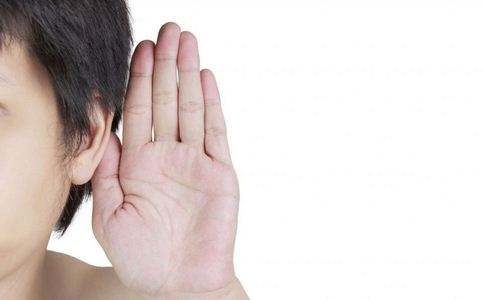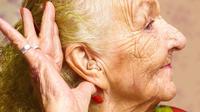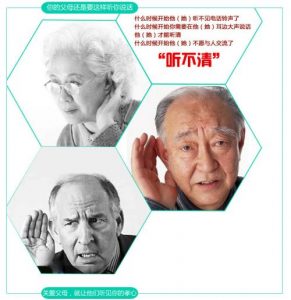Recently, Tang Apo, who has been interrupting 10 for several years, has not only reduced hearing, but also has stubborn headaches and vomiting after eating. The diagnosis of Tang Apo was diagnosed as having acoustic neuroma, and finally used in neurosurgery of Guangdong Second People’s Hospital. Innovative surgery for its successful tumor removal, intact preservation of facial nerves.

50 began to age on hearing loss and has a life of 10
This year, 63’s Tom Apo has been hearing from the right ear for a decade. I used to have tinnitus and my ears are always squeaky. But she has not been concerned about it, thinking that it is a normal phenomenon of aging in the elderly.
In recent years, the right ear seems to be no longer so loud. After several trials, the family found that the right ear of Tang Apo was completely deaf. Tang Apo felt that it was not painful, and the hearing of the other ear could meet the needs of daily life. She still didn’t put her ear on her mind. “It is aging,” said Tang Apo.
Recently, 2 Week, Tang Apo suddenly had a persistent headache, and she vomited when she ate. This was accompanied by her family to the hospital. The doctor performed an MRI examination for Tang Apo after a detailed inquiry about the history of Tang Apo. In the end, the head MRI found that the right side of the auditory nerve, brain stem, and cerebellum of Tang Apo had an 3cm tumor and was diagnosed as an acoustic neuroma.
The reason why Tang Apo’s family realized that Tong Apo’s deafness, headache and vomiting was that Tong Apo thought that this hearing loss was “not painful”. What is even more surprising to the family is that Tang Apo has lived with the tumor for more than a decade.
Innovative surgical methods successfully preserve the facial nerves of patients
Because Tang Apo’s acoustic neuroma is located around the brainstem, the risk of surgery is high, and the incidence of facial paralysis is higher. More seriously, Tang Apo also has hydrocephalus. The local hospital did not dare to implement it. Tang Apo was accompanied by her family to the Department of Neurosurgery of the Second People’s Hospital of Guangdong Province.
Zhang Yong, director of the Department of Neurosurgery, Second People’s Hospital of Guangdong Province, after consulting Tang Apo, made clear that Tang Apo had a diagnosis of acoustic neuroma. Because Tang Apo also had hydrocephalus, Director Zhang Yong believed that surgery should be treated immediately.
It is understood that the treatment of acoustic neuroma is mainly based on surgical treatment, generally using the traditional sigmoid sinus surgery. However, the risk of surgery is extremely high. The intracranial traction of the cerebellum and brainstem is severe, the postoperative recovery is slow, and surgery is very likely to destroy the facial nerve. More severe facial paralysis may occur after operation, resulting in incomplete closed eyes and skewed mouth, which seriously affects the quality of life of patients. In addition, the incidence of intracranial hematoma and infarction after this surgical approach is relatively high.
In order to avoid the serious postoperative complications of Tang Apo, after careful planning before the operation, Director Zhang Yong innovatively adopted the international “non-mainstream” “lost way” to perform acoustic neuroma resection for Tang Apo.
After the operation, Tang Apo was as expected. The symptoms of headache and vomiting disappeared. The facial nerves were well protected. The facial paralysis was very mild. The postoperative reaction was very light. It was laid off in two or three days. It is expected to be discharged one week after surgery. . Moreover, the surgical incision is only 5cm, located in the hair behind the ear, no need to shave the head before surgery, cosmetic suture after surgery, almost no visible wound after healing. Tang Apo is very satisfied with the curative effect.
According to Director Zhang Yong, transsphenoidal neurosurgical resection has the advantages of small incision, minimal invasiveness, high total resection rate, light postoperative response, and high facial nerve protection rate. It can bring superior curative effect to patients with acoustic neuroma. Vigorously advocate and promote it, making it the mainstream surgical method of acoustic neuroma.
Health reminder
Her family was very happy to see Tang Apo, who recovered her health after surgery. But what makes Tang Apo’s family curious is that she can live with her for more than a decade.
It is understood that the acoustic neuroma is a benign tumor located in the brain, the incidence rate accounts for about 8.43% of the entire intracranial tumor, which occurs in 30-50 years old. “One of the biggest features of this disease is that the progress is very slow and the course of disease is very long.” According to Director Zhang Yong, the early symptoms are only manifested as a decrease in hearing on one side, and because the hearing on the other side is normal, it is often ignored by the patient.
Director Zhang Yong said that the average time from onset to hospitalization was 3.5-5 years. 10-15% of patients recalled the symptoms and even dated 10 years ago. The most direct manifestation of tumor growth is the decline in hearing on one side of the patient, and a significant proportion of patients have completely lost the hearing on the affected side. Although acoustic neuroma is a benign tumor, the continued growth of the tumor will oppress the brainstem and the fourth ventricle, causing hydrocephalus, intracranial hypertension, and even life-threatening.
Director Zhang Yong introduced that in the past, many patients with acoustic neuroma were not diagnosed early because of the means of examination. With the clinical application of CT and MRI and the updating of surgical equipment, the diagnosis and treatment of acoustic neuroma have been very Great improvement. Director Zhang Yong reminded me that early detection, especially the acoustic neuroma with tumor less than 3cm is completely possible to maintain hearing. “Between 40-50 years old, if the hearing loss on one side is found, you should seek medical treatment to avoid hearing killer neuroma.”
Jinghao medical hearing aid reminder: hearing aids need to be professionally “fitted”, it is very important to choose a professional hearing aid fitting center and hearing aid fittings! All patients and friends have any hearing problems can call the Jinghao medical consultation, or personally Come to the fitting center experience. Hearing aid free consultation phone: +86-18566295705
You can also scan our WeChat public account for more information about hearing.

Link:Does 50 fall below the age of hearing? Be alert to cancer threats
REF: Hearing aids China, Hearing Loss, Digital Hearing AidsThe article comes from the Internet. If there is any infringement, please contact [email protected] to delete it.



